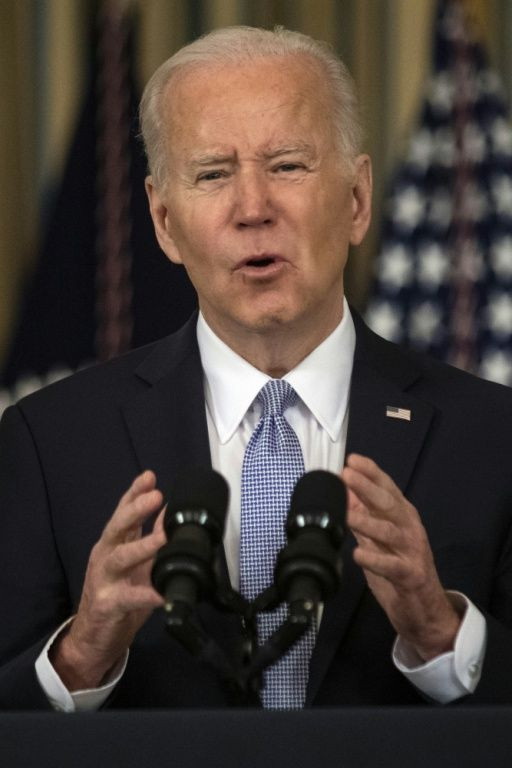US Labor Market Nears Full Recovery After Strong March Hiring
The US labor market has almost recovered from the mass joblessness caused by the pandemic, adding hundreds of thousands of positions last month and sending the unemployment rate nearly to where it was before Covid-19 broke out nationwide.
The Labor Department reported Friday that the unemployment rate fell more than analysts had predicted in March to 3.6 percent, a hair above its February 2020 level of 3.5 percent, while the economy added 431,000 jobs in the month.
Though the hiring total was slightly below analysts' forecasts, it was nonetheless a strong figure that underscored how far the economy has come since the pandemic started two years ago.
The economy has "gone from being on the mend to being on the move," President Joe Biden said Friday at the White House, as his administration grapples with low approval ratings driven in part by inflation, which has hit record levels during his presidency.
The economy has also added millions of jobs since Biden took office last year, but analysts said they doubted that the robust pace of hiring could be maintained.
"Today's job report is great news as it means the economy has almost fully recovered from the blow caused by the pandemic," Mark Zandi of Moody's Analytics wrote on Twitter.

"But it is somewhat disquieting in that the job market must cool off quickly, or inflation, our number one economic problem, will soon be a much bigger one."
The data was released as the Federal Reserve undergoes a delicate process of fighting price increases by raising interest rates from the zero level they held them at when the pandemic was at its worst, while simultaneously trying not to harm the recovery.
Ian Shepherdson of Pantheon Macroeconomics said the report contains signs that wage growth -- a driver of the price increases -- is moderating while workforce participation is increasing, trends that could convince the Fed to be less aggressive in tightening policy.
"Rates still need to rise substantially, but the Fed won't need to go overboard this year if the labor market is normalizing," he said.

The latest report showed key markers of labor market health had made a full recovery after the catastrophe brought on by the pandemic, which cost more than 20 million people their jobs and sent the unemployment rate up to 14.7 percent in April 2020.
Last month, the number of unemployed people fell to six million, just above its 5.7 million level before the pandemic, while the number of people whose employment ended involuntarily or who completed a temporary job came in at 1.4 million, close to where it was in February 2020.
The Labor Department also revised upwards the healthy jobs gains reported in January and February, saying they were a combined 95,000 higher than first reported.
A wide range of industries hired last month, including leisure and hospitality, the sector encompassing the bars and restaurants hit hardest by the pandemic's layoffs.
That industry added 112,000 positions, while professional and business services firms gained 102,000 jobs in March, retailers added 49,000 positions and manufacturing employment rose by 38,000.
The labor force participation rate, indicating the share of people employed or looking for work, ticked up slightly to 62.4 percent, a post-pandemic high but still a percentage point below February 2020.
Nonetheless, there was still ground to be recovered. The total number of employed people was still 1.6 million short of its pre-pandemic level, the data said, while employment in leisure and hospitality is 1.5 million jobs lower than before the pandemic.
The recovery was also not being felt equally, with unemployment for white workers hitting 3.2 percent in March, but coming in at 6.2 percent for Black Americans and 4.2 percent for Hispanic workers, though the rates for each group decreased from the month prior.
Economists viewed the data as reinforcing the Fed's commitment to forcefully raising interest rates, perhaps by half a percentage point at its meeting next month, which would be double the increase it announced when it began hiking in March.
"The US economy has recovered the majority of the jobs lost during the pandemic and now the focus remains on how bad inflation will get, but... the Fed can go forward with aggressive tightening," Edward Moya of OANDA said.
© Copyright AFP {{Year}}. All rights reserved.





















